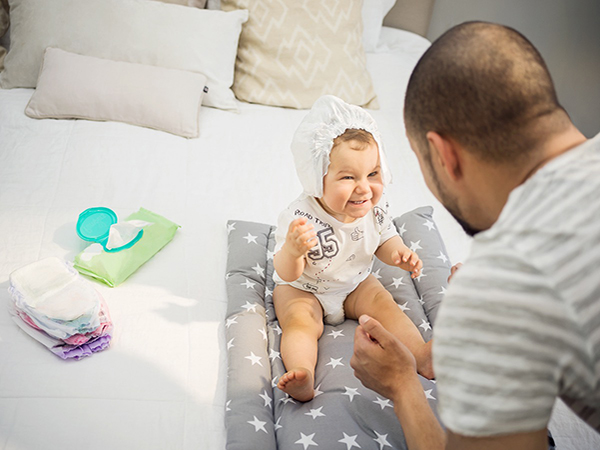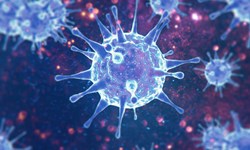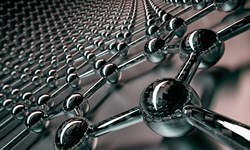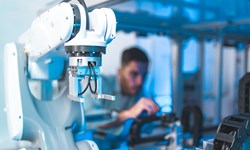
The antimicrobial additive start-up Parx Materials now offers its skin-inspired solution to nonwoven applications. Michaël van der Jagt, CEO and co-founder, tells Jessica Owen the story.
Unlike some areas of the textile & apparel industry, the antimicrobial market is flourishing due to Covid-19. Besides wanting extra protection from this particular virus, many consumers now have a greater respect for their health and safety, which is encouraging the industry to develop innovative solutions. In fact, Allied Market Research predicts that the antimicrobial textile market will experience a healthy compound annual growth rate (CAGR) of 7.4% between now and 2027, when the sector is expected to be worth US$18.2bn.
Currently, this part of the industry is dominated by silver or copper antimicrobial additives and finishes that aim to ‘kill’, ‘deactivate’ or ‘inhibit the replication’ of bacteria and viruses – take the popular products developed by HeiQ and Polygiene, for example. However, the antimicrobial additive start-up Parx Materials takes a different approach, inspired by the human skin.
“My co-founder (Michele Fiori, chief technology officer) and I met an Italian professor a few years ago who specialises in biochemistry and biomimicry,” says van der Jagt.
“He was a lovely gentleman, and he shared a few ideas with us, one of which was his hypothesis that you could copy the immune system of the human skin to create a good defence mechanism against viruses and bacteria. In theory, he said that you could use the body’s own trace element of zinc (a vital element in the skin often found in multivitamins) to do this.”
This concept intrigued both van der Jagt and Fiori, and after a few weeks of pondering, the pair decided to ask the professor about how they could explore it further, to which he replied: “I’ll put a team of chemists together from the faculty and we’ll see if we can achieve proof-of-concept.”
By 2012, proof-of-concept was on the table and so the team filed a patent application which was then approved in 2014. The word about Parx Materials then got out, which led to the European Commission naming the company as one of Europe’s Top Tech Startups in the Tech All Stars programme, and the company winning the World Technology Award for a material innovation with a likely long-term significance (other winners that year (2014) included Elon Musk for SpaceX).
But despite the awards and recognition, Parx Materials remained a side project for the team until around 2019. They wanted to invest that time in better understanding the technology, scaling the solution, and understanding the applications, until the team could confidently say ‘we’ve mastered the technology’.
So, how does the technology work? And how has the team used the professor’s hypothesis to use zinc? Well, Parx Materials works with the ionic form of zinc (not the metal form) which is found in the blood, skin, hair, bones, nails etc, and it has created an additive – a technology that it has coined SaniconcentrateTM.
“We use zinc to create a defence mechanism against viruses and bacteria, but not in the same way that biocides work,” van der Jagt explains. “Instead of killing the microorganisms, our solution prevents them from attaching to the surface in the first place.
“This is the critical first step because it means that, in the case of bacteria, they cannot colonise the surface, which leads to them taking up nutrients, proliferating and multiplying. And when the quantity of bacteria reaches a certain level, they act and produce a biofilm (a slimy layer on the surface), and they can use this to hide from other antimicrobials. This is why a surgeon is so afraid of biofilm formation on an implant because they know that it is bound to get an infection at that stage. Bacteria does not live forever – some 12 minutes and some 12 hours. So, if we can prevent them from latching on, then they will die not too long after.”
Additionally, van der Jagt says that because Parx Materials’ solution does not aim to harm the bacteria or challenge it to adapt or become stronger, the risk of the bacteria developing a resistance or turning into a ‘superbug’ is much lower.
So far, Saniconcentrate has already been applied to a wide range of applications and it has been tested to international norms such as ISO 22196 and ISO 20743, which means that products with the technology have more than 99.9% less viable bacteria on the surface after 24 hours compared to an untreated product. The technology is also antifungal and has been certified as ISO 21702 and ISO 18184 compliant, which means that it is able to speed up the reduction of viruses including SARS-CoV-2/Covid-19 by 99% in 24 hours.
As you can see, Parx Materials’ Saniconcentrate is a promising solution, which is why it is unsurprising to learn that is already being used in many applications. A PVC-coated textile to make outdoor furniture came first, then socks, anti-fouling items and medical products, and the latest is nonwovens for face masks and PPE.
“To make an antimicrobial nonwoven, we blend 3% of our material with 97% of the normal material into a dosing system which then mixes it to homogeneously disperse the solution across the material,” says van der Jagt.
“There is nothing noticeable in the end product and the strength, colour, ageing characteristics and UV resistance etc remains the same. Also, the price varies depending on the use case, but there will only be around a 50 cents (euro) more per kg of material.”
Right now, Parx Materials is working with nonwovens producers in China and Japan and the material is going on to produce face masks, hospital gowns and drapes. Meanwhile, the company is receiving many more requests from Europe and van der Jagt reckons that the technology could be applied to other nonwoven industries including diapers, feminine hygiene, and adult incontinence.
“Our technology is perfectly safe, and it can even benefit a person,” he says. “For example, our technology reduces odour, and face masks made with Saniconcentrate have helped to reduce acne.”
Moving forward, Parx Materials is awaiting the test results for a coating solution, which it hopes could be another avenue for the company to explore, in addition to addressing the many applications that have been brought to the company’s attention.
“The Covid-19 pandemic is encouraging companies to approach us and to request new things – I never imagined some of the cases that have come up so far,” says van der Jagt. “But it makes good sense to have our technology in all of these applications if it means incorporating that extra protection.”
To find out more about Parx Materials, visit www.parxmaterials.com
Error loading Partial View script (file: ~/Views/MacroPartials/ArticleFooter.cshtml)








